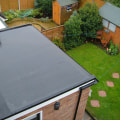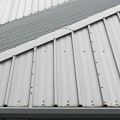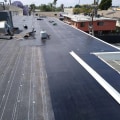Installing a flat roof is a complex process that requires the expertise of a professional. From breaking down the old roof material to applying sealant to all joints and overlaps, there are many steps involved in the process. In this article, we'll provide an in-depth look at the steps involved in installing a flat roof, from start to finish. The first step in replacing a flat roof is to remove any existing, damaged roof material.
This is done by using specialized roofing equipment to break down all layers of the roof, starting with the exposed membrane and working down to the cover. Some of these components can be reused if they are not damaged, while others must be completely discarded. Once everything is cleared away, it's time to start installing your new flat roof. This process involves placing each piece one by one and nailing them securely in place. It is also important to apply a sealant to all joints and overlaps for greater safety.
Once the flat roof is installed, you can add a layer of gravel or soil to the top of the roof to protect it from extreme weather conditions.
Modified bitumen was invented in the 1960s and quickly became a popular form of flat roof material.
Additionally, a galvanized drip edge specially designed for flat roofs can be used as an alternative to custom joint covers. These steps are important to ensure that your flat roof can withstand even the toughest elements. The workplace supervisor will be your point of contact on the day of installation. A team of professionally trained and experienced flat roof installers will be there in time to repair or replace your roof. For smaller commercial buildings, installation can be completed in as little as 5 days.For larger buildings, installing the flat roof can take 2 to 3 weeks. Get the most out of your commercial flat roof and trust the team that will get the project done right the first time. If you're considering building an entirely new commercial building, you may be wondering whether you should opt for a flat or sloped roof. If you have an idea of what type of flat roof you want or have, you can look for someone who specializes in that type of material. Even so, it's important for homeowners to do their research and know what to expect during a flat roof replacement. For example, horizontal lines of an 8 ½ x 13 foot flat roof section, which houses the Cambridge TV project, make it vulnerable to heavy snowfall and rainwater accumulation, so it must be built to last a long time.
Unlike other flat roof materials, EPDM comes in a wide variety of colors to make your building look as flawless and beautiful as it is functional. Installing a flat roof is no easy task and requires careful planning and execution. It's essential to hire experienced professionals who know how to properly install your new flat roof so that it lasts for years to come. With proper installation and maintenance, your new flat roof will provide you with years of reliable service.



